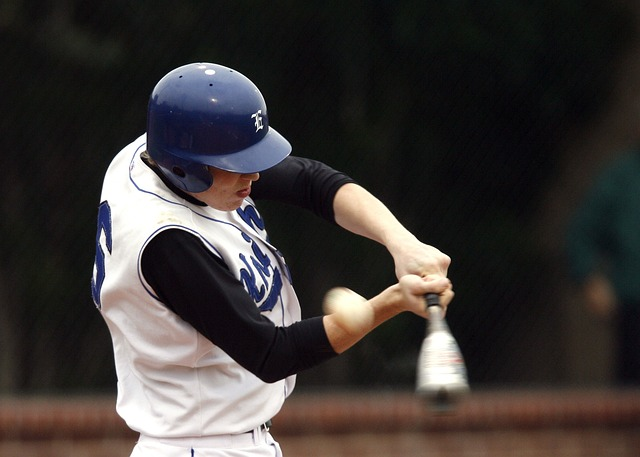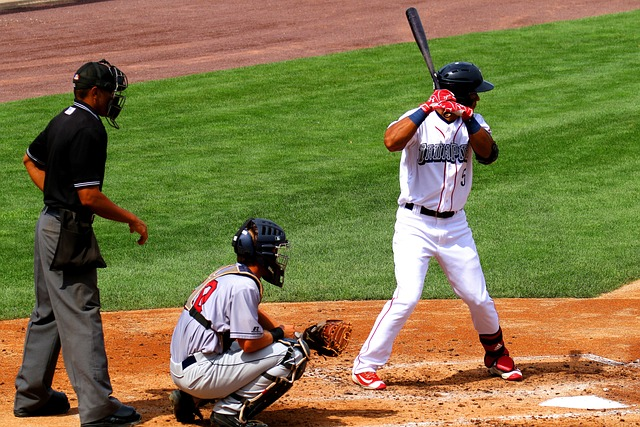
Baseball players who are contact hitters have a specific set of characteristics that distinguish them from other types of hitters. They are often smaller in stature, have quicker reflexes, and a good eye for the ball. Contact hitters focus on making contact with the ball instead of trying to hit it out of the park. They aim for base hits, bunts, and sacrifice flies to move runners around the bases. Contact hitters prioritize consistency over power and often have a high batting average with fewer strikeouts than power hitters.
There have been many famous contact hitters in baseball history. One of the most notable is Tony Gwynn, who played for the San Diego Padres from 1982 to 2001. He was known for his excellent hand-eye coordination, making contact with pitches outside the strike zone, and his ability to hit to all fields. Another famous contact hitter is Ichiro Suzuki, who played for the Seattle Mariners and the New York Yankees. He had an unorthodox batting stance and was known for his speed, making him a threat on the base paths. He holds the record for the most hits in a single season with 262.
Being a contact hitter has its advantages and disadvantages. One advantage is that contact hitters are less likely to strike out, which means they can help their team advance runners more consistently. They also tend to have a higher batting average than power hitters, which can be beneficial for the team's overall performance. However, contact hitters typically don't hit as many home runs as power hitters, so they may not be able to generate as many runs with one swing of the bat. They also may not be as valuable in high-pressure situations as power hitting, such as with runners in scoring position.
To become a contact hitter, players need to develop their hand-eye coordination, have a good understanding of the strike zone, and focus on making contact with the ball. Players should also work on their footwork and develop a compact swing to generate more power without sacrificing accuracy. Frequently practicing bunting and situational hitting can also improve a player's ability to move runners around the bases. With consistent practice and dedication, any player can become a successful contact hitter.

A contact hitter, unlike a power hitter, relies on their ability to place the ball in specific areas of the field. They are often able to hit the ball to the opposite field, which helps them to avoid being overpowered by pitchers. This approach requires a lot of discipline and patience at the plate. Contact hitters typically have a shorter swing than power hitters and are able to make contact with a wide variety of pitches, including those outside the strike zone. Their goal at bat, is to put the ball in play and force the defense to make a play.
One of the advantages of being a contact hitter is that they are less likely to strike out than power hitters. This means that they are able to make contact with the ball more consistently, which can lead to more runs being scored. Additionally, because they are able to hit the ball to all fields, they are able to keep opposing defenses guessing. This makes it more difficult for teams to shift their defense and can result in more hits for the contact hitter.
Despite these advantages, there are also some challenges that a contact hitter faces. They typically don't hit for a lot of power, which means that they may not be able to generate runs with one swing of the bat. Additionally, they may struggle in high-pressure situations, such as with runners in scoring position. However, with consistent practice and a strong understanding of their strengths and weaknesses, contact hitters can be a valuable asset to any team or lineup, just like a power hitter.
One of the main differences between a contact hitter in baseball and power hitters is their approach at the plate. Contact hitters tend to focus on making contact with the ball and putting it into play, rather than trying to hit it as hard as possible. They often have a shorter swing and use a lighter bat to maximize their ability to make contact with the ball and typically might bat early in lineup, but not as a cleanup hitter. In contrast, some of the best power hitters have a longer, more powerful swing, have a tendency to be pull hitters and use a heavier bat to maximize their ability to hit the ball with great force.

There have been many great contact hitters throughout baseball history. Here are just a few of the most notable:
Ichiro Suzuki - Ichiro is one of the most well-known contact hitters in MLB history. He holds the record for the most hits in a single season with 262, and has a career batting average of .311. He was also a ten-time All-Star and won both a Rookie of the Year award and an MVP award and was a great leadoff hitter as well.
Tony Gwynn - Gwynn played for the San Diego Padres from 1982 to 2001 and was known for his incredible hand-eye coordination. He is considered a pure contact hitter and had a career batting average of .338 and won eight batting titles during his career. He was also a 15-time All-Star and won five Gold Gloves.
Wade Boggs - Boggs was a third baseman for the Boston Red Sox, New York Yankees, and Tampa Bay Devil Rays. He had a career batting average of .328 and won five batting titles with his baseball bat during his career. He was also an 12-time All-Star and won two Gold Gloves.
Rod Carew - Carew played for the Minnesota Twins and the California Angels from 1967 to 1985. He had a career batting average of .328 and won seven batting titles during his career. He was also an 18-time All-Star and won seven Silver Slugger awards.
Pete Rose - Rose played for the Cincinnati Reds, Philadelphia Phillies, and Montreal Expos from 1963 to 1986. He had a career batting average of .303 and recorded 4,256 hits during his career, the most in MLB history. He was also a 17-time All-Star and won three batting titles.
One advantage of being a contact hitter is that you are able to make consistent contact with the baseball and get on base more frequently. This can help your team score runs and win games. A contact hitter is also less likely to strike out, which means they are able to put the ball in play and move runners around the bases.
However, one disadvantage of being a contact hitter, unlike a power hitter, is that you may not hit for a lot of power. This means you may not be able to drive in as many runs as a power hitter. Additionally, contact hitters are often more susceptible to hitting into double plays, which can kill rallies and limit your team's scoring opportunities.
If you want to become a better contact hitter, there are several strategies you can try. Here are a few tips:
Focus on your swing - Work on developing a short, compact swing that allows you to make consistent contact with the baseball.
Practice hitting to all fields - Work on hitting the ball to all parts of the field, which will make it more difficult for opposing teams to shift their defenses.
Improve your hand-eye coordination - Work on drills that improve your hand-eye coordination, such as hitting off a tee or playing catch with a partner.
Contact hitters typically use lighter bats that allow them to generate bat speed and make quick, compact swings. A bat with a balanced swing weight and a smaller barrel size can be a good option for a contact hitter looking to stay in the hitting zone.
There have been many great contact hitters in baseball history, so it's difficult to name just one. However, players like Tony Gwynn, Ichiro Suzuki, and Rod Carew are often cited as some of the best contact hitters of the game of all time. They were skilled at avoiding a double play with relative frequency helping to move runners around for the more powerful hitters in the lineup.
One of the most frequently asked questions regarding a contact hitter is the difference between a contact bat and a power hitters baseball bats. As mentioned earlier, contact hitters often prioritize making contact with and striking the ball over hitting for power. Therefore, a contact bat is typically lighter in weight and has a smaller barrel baseball bats size compared to a power bat. A power bat is designed to hit the ball harder and farther, and as a result, it has a larger barrel size and a heavier weight.
A contact hitter in baseball is an essential part of any baseball team. A contact hitter is known for their ability to use their baseball bat to consistently put the ball in play, making them valuable assets in situations where getting on base is crucial. Tony Gwynn, Ichiro Suzuki, Rod Carew, and Derek Jeter are some of the most famous examples of contact hitters in baseball history. While there are advantages and disadvantages to being a contact hitter in today's game, with the right strategies and approach, anyone can become a successful contact hitter.
Chris Sloan is a former baseball league commissioner and travel baseball coach who has made significant contributions to the sport. In 2018, he founded selectbaseballteams.com, a website that helps parents find youth and travel baseball teams in their local areas. Since its launch, the website has experienced impressive growth, offering a wealth of resources including teams, news, tournaments, and organizations. Chris's unwavering passion for baseball and his innovative approach to connecting parents with quality baseball programs have earned him a respected reputation in the baseball community, solidifying his legacy as a leading figure in the world of youth and travel baseball.
There are 0 comments on "What is a Contact Hitter in Baseball?"
chandler allen says:
"Hi my name is chandler, i’ve enjoyed..."
On Wanting to tryout for summer ball. as an 18 year old
david graham says:
"With no current MLB team in Canada,..."
On With no current MLB team in
Charles Chavez says:
"To All Coaches: Do you have13U or..."
On Looking for Games